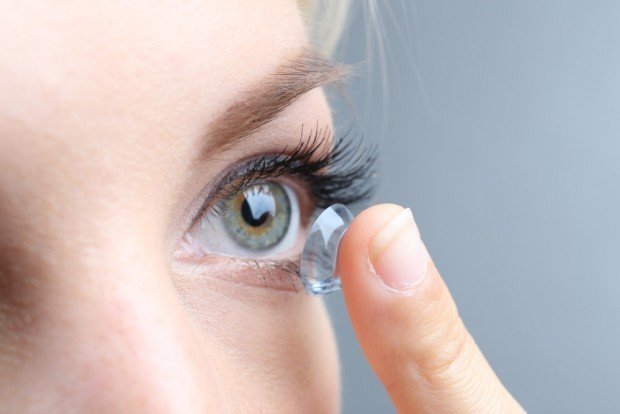With millions of wearers around the world, contact lenses are one of the most convenient and easy-to-use methods of vision correction. However, the process of inserting and removing them can be a tricky task and is often feared by wearers. But how many of these contact lens myths are true, and how can you overcome your fear?
For National Eye Health Week, Lenstore teamed up with expert optometrist Roshni Patel, BSC (Hons) MCOptom, and Yorkshire lifestyle and health Instagrammer, Hayley Anne to highlight their top tips on making the experience of using contact lenses as stress-free and simple as possible.
Always Check Your Lenses for Rips and Tears Optometrist Warns
Experiencing fear while inserting contact lenses is very common, as many users struggle with the process. Roshni Patel, BSC (Hons) MCOptom suggests this step-by-step guide for inserting and removing contact lenses:
Inserting contact lenses
-
Wash your hands and dry with a paper towel to avoid transferring fluff or lint to the lens.
-
Check the lens for any rips or tears before inserting. Discard if any are spotted.
-
Once the lens is in, do not release the upper lid straight away as you may blink the lens out, instead, let go of the lower lid and look down, left and right to remove air bubbles then gently release the upper lid.
-
If the lens is uncomfortable hold your lids again, use your finger to slide the lens onto the white of the eye, and give it a little massage. Then slide the lens back onto the cornea.
-
Try to make a habit of putting the lens in the same eye each day – for example, always inserting the right eye first, this will help avoid mix-ups if the prescription is different.
-
If you are experiencing discomfort and redness in your eyes, just remove the lenses and wear glasses. If the redness still persists after an hour or so, speak to your optician.
-
If using reusable lenses, once applying the lenses, discard any solution in the lens case and let it air dry. Do not rinse it with tap water, instead use a contact lens solution.
Removing contact lenses
-
When using reusable contact lenses, never a top-up the solution in the case with a new solution. The solution in the contact lens case should be discarded as soon as the lenses go in, leaving the case to air dry. The best way to keep your lenses clean is by filling up the cases with a fresh solution.
-
Check the lenses for any rips and tears. Daily lenses get binned regardless, but if they are reusable, bin them straight away, as they should not be going back into the eyes.
-
It can sometimes be difficult to remove lenses after prolonged wear, as they may have dried out. Adding eye drops can sometimes surprisingly make it even harder to remove the lens straight away by reducing friction. In this situation, you should either:
-
Use lubricating drops, but wait 15 mins before trying to remove
-
Use the lower lid to gently massage/nudge the bottom edge of the contact lens for 10-15 seconds. This will help loosen up the lens.
Debunking the greatest contact lens myth – losing them behind your eye
The biggest contact lens myth is the fear that one’s lens will slip behind their eye. However, Roshni Patel states this is not physically possible as there is a membrane around the eye that prevents it. The worst case is that the lens is just folded up and trapped under the upper lid.
The best thing to do in this situation is to gently massage the upper lid in a downwards motion to help bring the lens down. If this does not work, an optician can easily help remove it.
Instagrammer Hayley Anne reveals her top tips for inserting and removing contact lenses
Hayley has been a contact lens wearer for six years but previously had a fear of inserting them, stating, “I was nervous that I would use them incorrectly and somehow cause damage or infection to my eyes”. However, after educating herself on proper contact lens care and practicing the process, she now loves wearing them and has even said they have helped make her feel more confident. Hayley followed Roshni’s tips and shared some of her own tips she’s learned along the way.
Hayley’s top tips:
-
Always carrying a mirror and some eye drops when out and about wearing contact lenses.
-
Ensure you have the right lens prescription and eye match up as well as check the lens is positioned the right way up.
-
Look directly at the contact lenses when inserting them to ensure the lens is in the correct position.
The bottom line: don’t be nervous, take your time and practice
Although the prospect may be daunting at first, the process of wearing contact lenses is really nothing to be scared about. Allow yourself time to adjust to the process and take things at your own pace. By applying these tips and repeating the process, your confidence will grow significantly, both in wearing lenses and in yourself.




![women [longevity live]](https://longevitylive.com/wp-content/uploads/2020/01/photo-of-women-walking-down-the-street-1116984-100x100.jpg)










